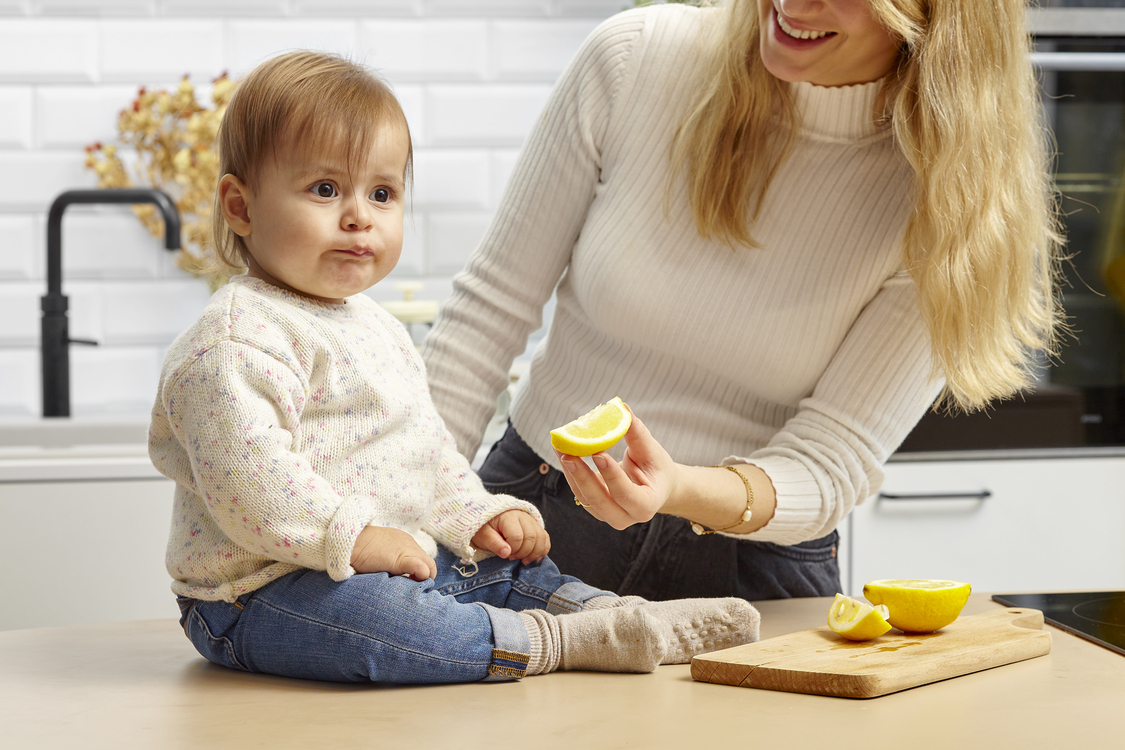How to prevent picky eating early on
As parents we don't want our children to become picky eaters. For most parents, having a “good eater” usually means that our child likes the food that we as parents like, and maybe we even cherish bigger ambitions if we’re not all that satisfied about our own eating habits.

Preventing picky eating starts earlier than you might think
Flavour learning already starts before you’re even born! A big part in raising children that will grow up to be adults that have a positive relation with food is exposure to flavours from an early age. That early age might be even younger than you think.
Prenatal flavour learning
Studies show that the food a mother eats during pregnancy reaches the foetus and results in the baby’s food preferences after birth. This means that flavour learning already starts in the womb!
A baby whose mother has eaten a lot of garlic during pregnancy, for example, will likely be a fan of garlic himself. All the more reason to have a healthy and varied diet during pregnancy.
Flavour learning during breastfeeding
Flavour learning through the mother continues as the baby is getting breastfed. Flavours of the food eaten by mom reach the milk and in that way the baby. Breastmilk can vary in flavour depending on what the mother ate, so actually you’re already preparing your baby for more flavours. Formula-fed babies don’t have that variety, but there is no indication to suggest that they would turn out to be pickier eaters than breastfed children. A lot of flavour learning actually happens in the first year of eating solids. That's when we want to introduce a long list of foods, before the picky eating period normally starts.
Babies have a sweet tooth
Babies have a natural sweet tooth and also have a preference for salty foods. This means sour, bitter, earthy or grassy flavours are really more acquired tastes. And it is those flavours that can usually be found in the most nutritious foods. This means it’s important for babies to get familiarised with these flavours early on.
The first year of solids is incredibly important for fussy eating prevention and flavour learning
Infants, making the switch from a diet consisting exclusively of milk to a diet consisting of many different kinds of food, are very open to trying new foods and flavours. They don't have clearly defined food preferences yet and are eager to discover and try new things, including foods.
This is a great window of opportunity to introduce lots of different flavours. We suggest you offer a variety of foods with different flavours from the start. Avoid trying to make everything sweet so your baby will like it better. Go for the entire flavour spectrum and let your baby get to know pure flavours and ingredients.
Why does fussy eating become more pronounced around 2 years old?
Between the ages of 18 and 24 months this willingness to try new foods decreases. At this age toddlers become more self-aware and also stubborn and might need up to 15 tries to start liking a food.
Between the ages of 18 and 24 months this willingness to try new foods decreases. At this age toddlers become more self-aware and also stubborn. This is the infamous ‘terrible twos’ phase, which toddlers go through in varying degrees. For some kids, this can also progress into something that’s called neophobia, which means fear of trying new things. This combination of stubbornness and neophobia makes it especially challenging to introduce new foods. At this stage, toddlers might need up to 15 tries to start liking a food.
Here’s the good news:
Science shows us that the more flavours we introduce to our babies before the ‘disgust phase’, the easier they will get through this phase.
A child that is already familiar with many types of food will have an easier time going through this ‘no-phase’ and will be much more likely to have a varied taste palate later on in childhood, adolescence and adulthood. Science shows us that the more flavours we introduce to our babies before the ‘disgust phase’, the easier they will get through this phase. We want to utilise this window of opportunity and make the list of foods they know as long as we can. This way we give pur children all the confidence they need to become great eaters and build a positive food relation.
Picky eating is not only about flavour. Food texture can be very challenging too
It is very common for toddlers and children (and adults) to have an aversion to some textures. Whether it's slimy textures, mixed textures, dry textures or airy textures, all of us have something we prefer not to eat. However, in toddlers and children this can become problematic if a lot of textures are off limits. Read our article on texture aversion for some practical advice on how to handle this. But with textures the same goes as with flavours. We need to expose children to a variety of textures during those first years. Sticking to runny, pureed foods is just not enough.
Avoid feeding aversion early on
Another thing to be mindful of are common mistakes made by all of us that can increase the chances of feeding aversion, and also picky eating later on in life. Read our article on the top 5 commonly made mistakes that we can easily change to make the meal time experience more pleasant for our little ones.
Tips and recipes for picky eaters
If you have a picky eater at home, don’t worry. There are various techniques and easy tricks you can use to help your child try more different foods. A lot of it will be patience. Your child will grow out of the no-phase and will become more open to trying new things. However, keep offering the foods even though you know your child doesn’t like them. Remember it can take A LOT of attempts for a child to start liking a food. But it’s so important to not resort to the same thing over and over again, in order for your child to have a balanced and varied diet later on in life.
Sometimes just keeping on offering is not enough. We offer expert advice and picky eating tips as well as healthy meals for picky eaters. If you want to get weekly tips and recipes, tailored to your child, start our food journey.
